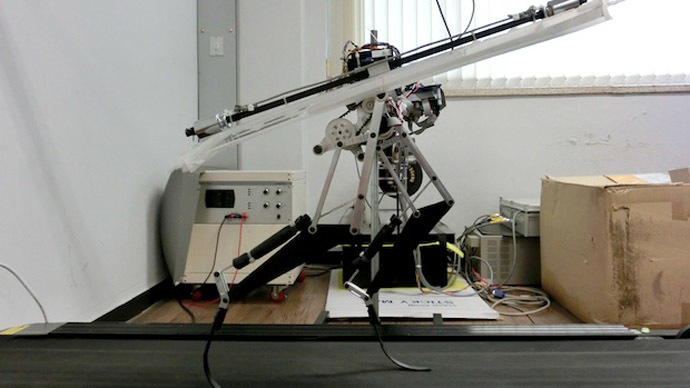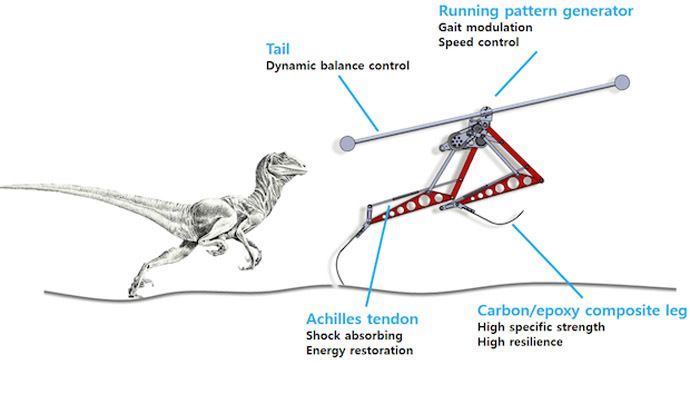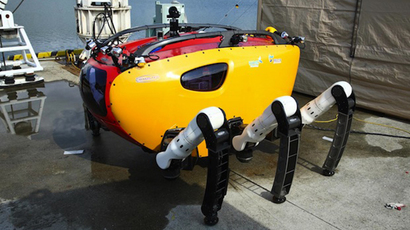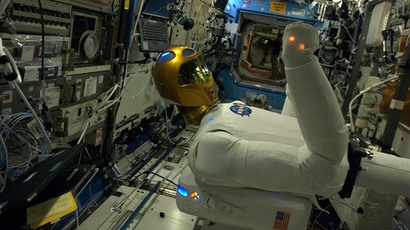'Faster than Usain Bolt': Prehistoric carnivore inspires two-legged sprinter robot (VIDEO)

South Korean scientists have taken tips from the prehistoric Velociraptor dinosaur to build one of the world's simplest and fastest robots, capable of reaching a speed of 46 kilometers per hour (28.5 mph).
Just like the carnivore that roamed the earth 75 million years
ago, the ‘Raptor’ robot has two legs and a mechanism that works
like a tail. The machine was built by the Korea Advanced
Institute of Science and Technology (KAIST).
According to the scientists behind the project, the spinning rod
- which executes the function of the tail - provides stability to
the robot, helping it navigate around obstacles.
The mechanism uses carbon/epoxy composite legs - which resemble
the running blades used by amputees - for greater durability,
IEEE Spectrum magazine reports.
While running on a treadmill, the Raptor is able to outrace the
world's fastest man, six-time Olympic champion Usain Bolt, whose
maximum speed reached is 43.92 km/hr (27.2 mph).
But the speed of 46 km/hr doesn’t make KAIST’s invention the
world's fastest robot; it still trails Boston Dynamics'
four-legged 'Cheetah' robot by 1 km/hr (.62 mph).
However, it's Raptor's simplicity – not its speed – which makes it stand out among other running robots that rely on multiple actuators.

Unlike its counterparts, the Korean robot - which weighs just
three kilograms (6.61 lbs) – uses only one motor per leg and an
Achilles tendon system to recover energy during motion.
The Raptor's control system is far from complicated as well; it
operates on a simple running pattern generator computer program.
The KAIST team is now working on optimizing the robot's speed,
stability, and control.














